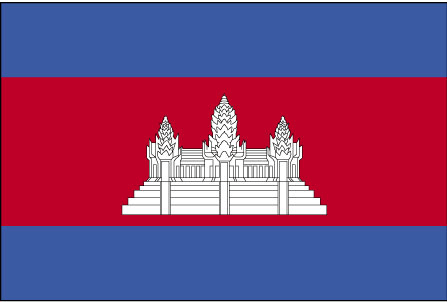To help inspire or plan your trip to Cambodia, some of its major attractions
for travellers are shown below, including some of the best natural, historical, cultural and adventure sites in the country.
These include all of UNESCO World Heritage Sites for Cambodia which represent the best
of the world's cultural and natural heritage.
Click on the icons below to focus on specific types of features
(click again to return to all).
|
|
|
|
|
|
|
|
|
|
|
|
 |
|---|---|---|---|---|---|---|---|---|---|---|---|
| Natural | History | Wildlife | Trekking | Cities | Religious Monument | Boat Journey | Rail Journey | Diving | Cultural | Adrenaline | UNESCO WHS |
Historical attractions in Cambodia
| Angkor | |
|---|---|
Angkor is one of the greatest archaeological sites in the world, containing the magnificent remains of the Khmer Empire. One of the great civilisations of south-east Asia, the Khmers kings ruled between the 9th and 15th centuries and saw their empire extend over most of the Indochina peninsula at its peak. With over 100 temples spread over 400 km², Angkor warrants several days of exploration. The 12th century Angkor Wat is the most famous monument, built as a funerary temple for Suryavarman ll in honour of Vishnu, noted for its imposing structure with five towers and intricate bas reliefs. The second Angkor capital built by Rajendravarman in the 10th century contains the temples of Prasat Kravan, Sra Srang, and East Mebon. The Royal Palace enclosure contains the Phimeanakas temple built by Suryavarman I and the Terraces of the Elephants and the Leper King. Jayavarman Vll built the fortified city of Angkor Thom at the end of the 12th Century, enclosed by an 8 metre high wall and five monumental gates. Inside lies the Bayon temple with fine bas reliefs in its temples and numerous towers. Other notable structures are the Banteay Srei Temple, one of the best preserved temples, and Ta Phrom, half buried in the jungle and famous as a location for the film 'Tomb Raider'. UNESCO World Heritage Site: Angkor | |
| Phnom Penh | |
|---|---|
One of the finest cities in south-east Asia in the 1950s and 60s, Phnom Penh suffered considerably during the brutal Khmer Rouge regime but has managed to retain much of its attraction and charm. The Royal Palace is a magnificent and beautiful complex and includes the Silver Pagoda temple within its grounds, which houses the Emerald Buddha. The French Quarter near the riverfront has many colonial buildings beings restored and a lively bar and restaurant scene. The Central Market and Russian Market are good places to buy jewellery and clothes respectively. Other attractions in the city include the temple of Wat Phnom and the National Museum. | |
| The Killing Fields | |
|---|---|
The regime of Pol Pot and the Khmer Rouge in the late 1970s was one of the most brutal and murderous in human history, with millions of Cambodians murdered. There are some harrowing reminders of the atrocities in and around Phnom Penh. The Killing Fields of Choeung Ek, 15km south-west of the capital, are the site where an estimated 17,000 Cambodians were killed. A memorial stupa there is a huge glass tower filled with human skulls. In the city the Tuol Sleng Genocide Museum is located in a former school that was transformed into a torture and interrogation centre (known as S21), from where up to 20,000 people were tortured or sent to their execution. The museum is a moving and sobering account of the horrors of the Khmer Rouge years. | |
| Temple of Preah Vihear | |
|---|---|
The Temple of Preah Vihear is a Hindu temple dedicated to the god Shiva which dates back to the 11th century under the Khmer kings Suryavarman I and Suryavarman II. The temple is very well preserved and is an outstanding example of Khmer architecture and carved stone ornamentation. It is situated in a remote cliff-top location in northern Cambodia. UNESCO World Heritage Site: Temple of Preah Vihear | |
| Angkor Borei | |
|---|---|
The pre-Angkorian capital of Angkor Borei is reached by boat from the town of Takeo, along a system of 8th century canals. The remote temple is located on a hilltop overlooking flood plains. A small museum near the site details the finds from this civilisation. | |
| Sambor Prei Ku | |
|---|---|
Sambor Prei Kuk was the capital of the pre-Angkorian Chenla kingdom around the 6th-7th century. The site contains the remains of over 100 temples, scattered and overgrown in the lush forest, lending an air of mystery to this 'lost city'. | |


